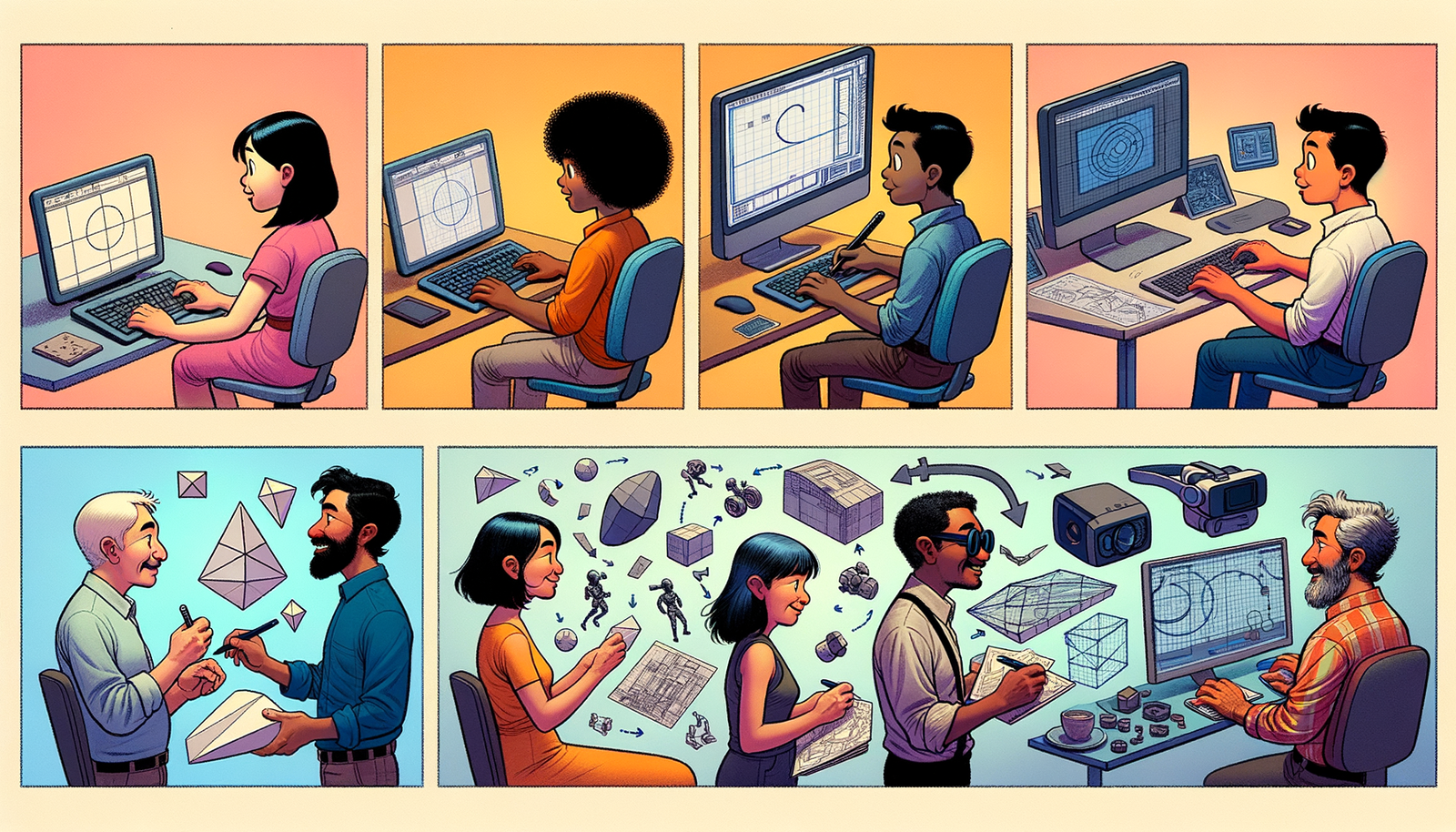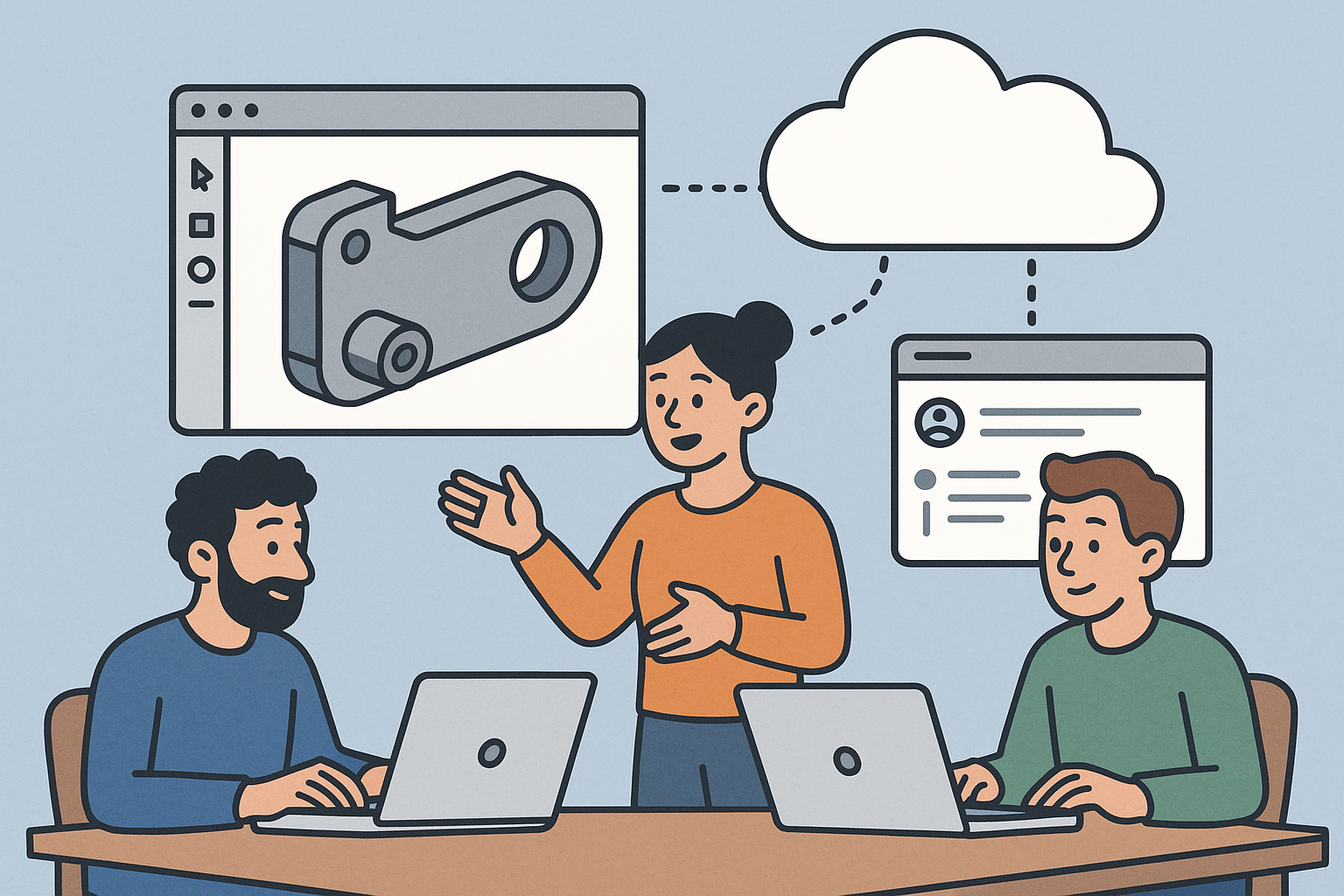Your Cart is Empty
Customer Testimonials
-
"Great customer service. The folks at Novedge were super helpful in navigating a somewhat complicated order including software upgrades and serial numbers in various stages of inactivity. They were friendly and helpful throughout the process.."
Ruben Ruckmark
"Quick & very helpful. We have been using Novedge for years and are very happy with their quick service when we need to make a purchase and excellent support resolving any issues."
Will Woodson
"Scott is the best. He reminds me about subscriptions dates, guides me in the correct direction for updates. He always responds promptly to me. He is literally the reason I continue to work with Novedge and will do so in the future."
Edward Mchugh
"Calvin Lok is “the man”. After my purchase of Sketchup 2021, he called me and provided step-by-step instructions to ease me through difficulties I was having with the setup of my new software."
Mike Borzage
Design Software History: Advancements in Real-Time Rendering: Transforming Design Software Through History
August 15, 2024 4 min read


Introduction to Real-Time Rendering in Design Software
Real-time rendering has revolutionized the design software landscape, offering unprecedented levels of interactivity and visual fidelity across various domains such as architecture, engineering, gaming, and film. At its core, real-time rendering refers to the process of generating images at a rate fast enough to provide immediate feedback to users, typically aiming for frame rates of 30 frames per second (fps) or higher. This capability is crucial in enabling designers to experience and manipulate their creations instantly.
The historical context of real-time rendering is marked by significant computational limitations in the early years of design software. During the initial phases, computational resources were limited, resulting in slow and non-interactive rendering processes. Over time, the evolution of graphical processing units (GPUs) greatly enhanced rendering capabilities. This advancement allowed for more complex and lifelike visualizations, transforming the way designers and engineers work.
Early Developments and Pioneers
The birth of real-time rendering can be traced back to the 1980s, a period marked by pioneering efforts and technological breakthroughs. Early real-time rendering technologies were introduced during this decade, laying the groundwork for future advancements. Notable figures such as Edwin Catmull and Jim Blinn made significant contributions to the field. Edwin Catmull, a co-founder of Pixar, made groundbreaking advances in computer graphics, while Jim Blinn, known for the Blinn-Phong shading model, introduced techniques that improved the visual realism of rendered images.
Several significant milestones punctuated the early development of real-time rendering technologies. The development of OpenGL and DirectX played a crucial role in standardizing rendering processes and providing the necessary tools for developers to create visually rich applications. Companies like Silicon Graphics were instrumental in advancing these technologies, pushing the boundaries of what was possible in real-time graphics.
One of the key milestones in real-time rendering software was the creation of the Quake engine by id Software. This engine introduced real-time 3D rendering capabilities that were revolutionary at the time, setting a new standard for interactive graphics and paving the way for future developments in the field.
Technological Advancements and Their Impact
Several key technological innovations have driven the evolution of real-time rendering. The introduction of shaders, small programs that run on the GPU, allowed for more sophisticated rendering techniques and greater control over how images are generated. This advancement enabled more realistic lighting, shading, and texturing effects, significantly enhancing the visual quality of rendered scenes.
Hardware advancements played a pivotal role in the progress of real-time rendering. The development of powerful GPUs by companies like NVIDIA and AMD provided the necessary computational power to handle complex rendering tasks. These GPUs became the backbone of real-time rendering, enabling more detailed and dynamic visualizations.
Alongside hardware improvements, software capabilities also evolved. Game engines like Unreal Engine, Unity, and CryEngine transformed the landscape of real-time rendering by offering comprehensive toolsets for developers. These engines not only facilitated the creation of visually stunning games but also found applications in other fields such as architecture and product design.
One of the most impactful advancements in recent years has been the introduction of real-time ray tracing and global illumination. These techniques allow for more accurate simulation of light behavior, resulting in photorealistic images that greatly enhance the visual experience. Tools like Lumion and Enscape have integrated real-time rendering into architectural workflows, enabling designers to visualize and interact with their projects in real time.
The impact of real-time rendering can be seen across various industries. In the automotive industry, real-time rendering facilitates virtual prototyping, allowing designers to iterate and refine their designs quickly. In product design, it enables rapid visualization and testing of different concepts. The influence of real-time rendering extends to numerous fields, driving innovation and improving design processes.
Future Prospects and Emerging Trends
The future of real-time rendering holds exciting possibilities. One of the most promising areas is the integration of AI-driven rendering and machine learning techniques. These technologies have the potential to further enhance the efficiency and quality of real-time rendering, enabling more complex and realistic visualizations.
Cloud rendering technologies are also expected to play a significant role in the future of real-time rendering. By leveraging the power of cloud computing, designers can access vast computational resources, allowing for more detailed and resource-intensive rendering tasks. This development opens up new opportunities for collaboration and scalability in design projects.
Augmented Reality (AR) and Virtual Reality (VR) are poised to become major drivers of real-time rendering advancements. The significance of real-time rendering in AR/VR applications cannot be overstated, as it enables immersive and interactive experiences. Mixed reality environments, where digital and physical worlds blend seamlessly, rely heavily on real-time rendering to create believable and engaging interactions.
Despite the remarkable progress, real-time rendering still faces several challenges. Computational demands remain a significant hurdle, especially for achieving real-time photorealism. However, these challenges also present opportunities for innovation. As technology continues to evolve, interdisciplinary applications of real-time rendering are likely to emerge, leading to new and exciting possibilities.
Conclusion
The evolution and impact of real-time rendering in design software have been profound. The journey from early computational limitations to the advanced capabilities of today has transformed the way designers and engineers work. Real-time rendering has brought about greater interactivity, improved visual fidelity, and enhanced design processes across various industries.
As we look to the future, it is clear that continued innovation in rendering technologies will play a crucial role in shaping the design landscape. The potential of AI-driven rendering, cloud technologies, and AR/VR applications holds great promise for further advancements. Real-time rendering has the power to transform future design projects, enabling more immersive, interactive, and visually stunning experiences.
Also in Design News

Design Software History: Collaboration in Design Software: From File-Based PDM to Cloud-Native Co-Editing and Design Threads
December 23, 2025 9 min read
Read More
End-to-End Encryption for CAD/PLM: Protecting Design IP in Cloud Workflows
December 23, 2025 13 min read
Read More
Cinema 4D Tip: Camera-Based Projection Mapping Workflow for Cinema 4D
December 23, 2025 2 min read
Read MoreSubscribe
Sign up to get the latest on sales, new releases and more …


